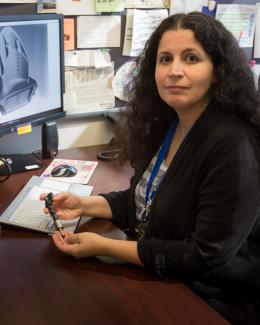Abstract
The spontaneous imbibition of water and other liquids into gas-filled fractures in variably-saturated porous media is important in a variety of engineering and geological contexts. However, surprisingly few studies have investigated this phenomenon. We present a theoretical framework for predicting the 1-dimensional movement of water into air-filled fractures within a porous medium based on early-time capillary dynamics and spreading over the rough surfaces of fracture faces. The theory permits estimation of sorptivity values for the matrix and fracture zone, as well as a dispersion parameter which quantifies the extent of spreading of the wetting front. Quantitative data on spontaneous imbibition of water in unsaturated Berea sandstone cores were acquired to evaluate the proposed model. The cores with different permeability classes ranging from 50 to 500 mD and were fractured using the Brazilian method. Spontaneous imbibition in the fractured cores was measured by dynamic neutron radiography at the Neutron Imaging Prototype Facility (beam line CG-1D, HFIR), Oak Ridge National Laboratory. Water uptake into both the matrix and the fracture zone exhibited square-root-of-time behavior. The matrix sorptivities ranged from 2.9 to 4.6 mm s(-0.5), and increased linearly as the permeability class increased. The sorptivities of the fracture zones ranged from 17.9 to 27.1 mm s(-0.5), and increased linearly with increasing fracture aperture width. The dispersion coefficients ranged from 23.7 to 66.7 mm(2) s(-0.5) and increased linearly with increasing fracture aperture width and damage zone width. Both theory and observations indicate that fractures can significantly increase spontaneous imbibition in unsaturated sedimentary rock by capillary action and surface spreading on rough fracture faces. Fractures also increase the dispersion of the wetting front. Further research is needed to investigate this phenomenon in other natural and engineered porous media. (C) 2015 Elsevier Ltd. All rights reserved.


